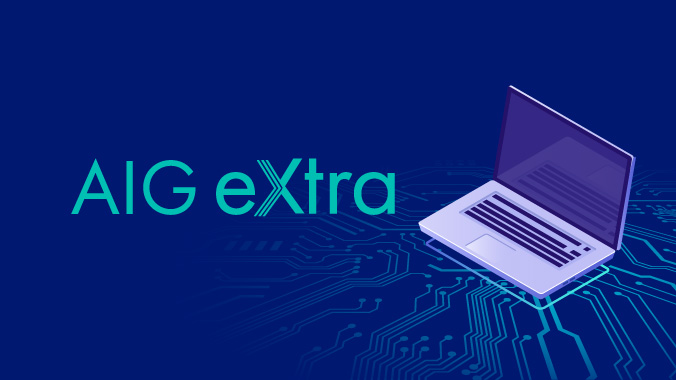
These are four key factors that Robinhood uses to make money. They include interchange fees, payment for order flow, profit from margin lending, payment for order flow and interest from uninvested funds. These revenue streams can be used to assess how well the trading platform works for you. These factors can be used to help you determine if the $137 cost is worth it. You might be wondering how Robinhood makes their money.
Interchange fees
Exchange fees are how Robinhood makes its money. The brokerage firm charges customers a small percentage of each trade to process the order. The broker may earn $5.20 per 1,000 shares that you trade. Using TD Ameritrade and Schwab, however, the broker earns 16 cents. This is not a lot, but it can add up when you trade for millions.
The company holds the stock for its investors at the National Securities Clearing Corporation, the parent company of the Depository Trust & Clearing Corporation. Then, Robinhood lends the stock to hedge funds and other agents with margin accounts. The broker will earn more interest on the stock it lends. It also keeps the full amount it earns in interest. Robinhood isn't the only source of income.

Payment for order flow
Washington lawmakers have been targeting order flow payments in recent months, so it is not surprising. Meme stocks in particular have seen prices soar and the practice to pay for order flow is a substantial portion of Robinhood’s revenues. Robinhood made 80 percent of its revenue from payments according to its financial results. The question is: Should Robinhood internalize its order-flow business?
Robinhood made $331million in revenue in Q1 2021 from payment for orders flow, up from $91 million the previous quarter. At the same time, Robinhood's assets under custody jumped to $80.9 billion. It paid an average of $4,572 for each account. Robinhood was close to the top when it came to average order flow pricing of options and stocks that are not S&P.
Uninvested cash earns interest
Robinhood is able to make money from interest earned on cash that has not been invested. This is done by placing client cash into a network FDIC-insured financial institutions. The broker keeps less that 10% of the interest and pays its clients the rest. The brokerage also earns significant revenue from stock loans. Robinhood is different. Robinhood does not make any money from the cash of clients who invest.
You will need a Robinhood brokerage account to be eligible for this service. The cash management account transfers any uninvested money into a bank account and Robinhood receives interest. Robinhood's only source of income from interest on cash that isn't invested is through this account. Robinhood has HSBC, Citibank and Wells Fargo as its partner banks. Robinhood Cash Management accounts may be opened to gain access to more 75,000 ATMs.

Margin lending: Profitable
Robinhood's marg lending program has produced approximately $137.2million of revenue in the first six-months of 2020. The program generates transactional and other revenue components. Institutional investors and other brokerages often serve as customers for investors who borrow funds to purchase options, stocks, and other securities. This type of borrowing can bring in substantial profits for the company. Margin lending may not be right for every investor. Before jumping on this bandwagon, you should be aware of these things.
Robinhood partners up with a bank to provide cash as collateral if you are considering a margin loan. This is your only safety measure, because your shares may not be sold if you don't pay. The downside is that you might lose your right of vote. You might also be eligible for cash payments, instead of dividends. Tax authorities may treat this differently.
FAQ
What investments are best for beginners?
Start investing in yourself, beginners. They should also learn how to effectively manage money. Learn how you can save for retirement. Budgeting is easy. Learn how you can research stocks. Learn how to interpret financial statements. How to avoid frauds How to make informed decisions Learn how to diversify. Learn how to protect against inflation. Learn how you can live within your means. Learn how you can invest wisely. This will teach you how to have fun and make money while doing it. It will amaze you at the things you can do when you have control over your finances.
How much do I know about finance to start investing?
To make smart financial decisions, you don’t need to have any special knowledge.
Common sense is all you need.
These tips will help you avoid making costly mistakes when investing your hard-earned money.
First, be cautious about how much money you borrow.
Don't put yourself in debt just because someone tells you that you can make it.
Be sure to fully understand the risks associated with investments.
These include inflation and taxes.
Finally, never let emotions cloud your judgment.
Remember that investing isn’t gambling. It takes skill and discipline to succeed at it.
You should be fine as long as these guidelines are followed.
Does it really make sense to invest in gold?
Since ancient times gold has been in existence. It has remained valuable throughout history.
But like anything else, gold prices fluctuate over time. You will make a profit when the price rises. You will lose if the price falls.
It doesn't matter if you choose to invest in gold, it all comes down to timing.
How can I invest wisely?
It is important to have an investment plan. It is important that you know exactly what you are investing in, and how much money it will return.
You need to be aware of the risks and the time frame in which you plan to achieve these goals.
This way, you will be able to determine whether the investment is right for you.
Once you have chosen an investment strategy, it is important to follow it.
It is better not to invest anything you cannot afford.
Can I invest my 401k?
401Ks are great investment vehicles. Unfortunately, not all people have access to 401Ks.
Most employers offer their employees two choices: leave their money in the company's plans or put it into a traditional IRA.
This means you will only be able to invest what your employer matches.
And if you take out early, you'll owe taxes and penalties.
What investment type has the highest return?
The answer is not necessarily what you think. It all depends on the risk you are willing and able to take. One example: If you invest $1000 today with a 10% annual yield, then $1100 would come in a year. Instead, you could invest $100,000 today and expect a 20% annual return, which is extremely risky. You would then have $200,000 in five years.
The return on investment is generally higher than the risk.
The safest investment is to make low-risk investments such CDs or bank accounts.
However, the returns will be lower.
Conversely, high-risk investment can result in large gains.
For example, investing all your savings into stocks can potentially result in a 100% gain. However, you risk losing everything if stock markets crash.
Which one do you prefer?
It all depends upon your goals.
To put it another way, if you're planning on retiring in 30 years, and you have to save for retirement, you should start saving money now.
High-risk investments can be a better option if your goal is to build wealth over the long-term. They will allow you to reach your long-term goals more quickly.
Remember: Riskier investments usually mean greater potential rewards.
But there's no guarantee that you'll be able to achieve those rewards.
Can I lose my investment.
Yes, you can lose everything. There is no way to be certain of your success. There are however ways to minimize the chance of losing.
One way is diversifying your portfolio. Diversification allows you to spread the risk across different assets.
You can also use stop losses. Stop Losses allow shares to be sold before they drop. This decreases your market exposure.
Margin trading is also available. Margin trading allows you to borrow money from a bank or broker to purchase more stock than you have. This can increase your chances of making profit.
Statistics
- Over time, the index has returned about 10 percent annually. (bankrate.com)
- If your stock drops 10% below its purchase price, you have the opportunity to sell that stock to someone else and still retain 90% of your risk capital. (investopedia.com)
- Some traders typically risk 2-5% of their capital based on any particular trade. (investopedia.com)
- 0.25% management fee $0 $500 Free career counseling plus loan discounts with a qualifying deposit Up to 1 year of free management with a qualifying deposit Get a $50 customer bonus when you fund your first taxable Investment Account (nerdwallet.com)
External Links
How To
How to invest in Commodities
Investing is the purchase of physical assets such oil fields, mines and plantations. Then, you sell them at higher prices. This process is called commodity trade.
Commodity investment is based on the idea that when there's more demand, the price for a particular asset will rise. When demand for a product decreases, the price usually falls.
You will buy something if you think it will go up in price. You'd rather sell something if you believe that the market will shrink.
There are three main categories of commodities investors: speculators, hedgers, and arbitrageurs.
A speculator buys a commodity because he thinks the price will go up. He does not care if the price goes down later. For example, someone might own gold bullion. Or someone who invests on oil futures.
An investor who invests in a commodity to lower its price is known as a "hedger". Hedging allows you to hedge against any unexpected price changes. If you own shares in a company that makes widgets, but the price of widgets drops, you might want to hedge your position by shorting (selling) some of those shares. That means you borrow shares from another person and replace them with yours, hoping the price will drop enough to make up the difference. If the stock has fallen already, it is best to shorten shares.
An "arbitrager" is the third type. Arbitragers trade one thing to get another thing they prefer. For example, if you want to purchase coffee beans you have two options: either you can buy directly from farmers or you can buy coffee futures. Futures allow the possibility to sell coffee beans later for a fixed price. You are not obliged to use the coffee bean, but you have the right to choose whether to keep or sell them.
You can buy something now without spending more than you would later. So, if you know you'll want to buy something in the future, it's better to buy it now rather than wait until later.
There are risks with all types of investing. One risk is the possibility that commodities prices may fall unexpectedly. Another risk is that your investment value could decrease over time. These risks can be reduced by diversifying your portfolio so that you have many types of investments.
Another factor to consider is taxes. Consider how much taxes you'll have to pay if your investments are sold.
If you're going to hold your investments longer than a year, you should also consider capital gains taxes. Capital gains taxes apply only to profits made after you've held an investment for more than 12 months.
You might get ordinary income instead of capital gain if your investment plans are not to be sustained for a long time. Ordinary income taxes apply to earnings you earn each year.
You can lose money investing in commodities in the first few decades. You can still make a profit as your portfolio grows.